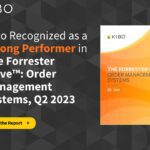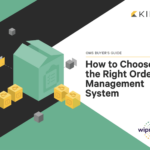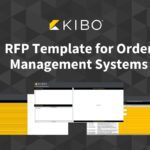The clash between traditional enterprise resource planning (ERP) systems and the dynamic demands of online business has become increasingly apparent. While ERPs have long served as the backbone of large-scale operations, their limitations in handling the customer-facing aspects of businesses have become more evident.
In the current environment, where time is of the essence, retailers eagerly seek efficient solutions to meet evolving customer demands, such as curbside delivery or ship-from-store programs. It is tempting for these businesses to explore quick fixes by configuring their ERP solution to accommodate these functions. However, amidst the ever-changing landscape of inventory availability and order management, companies are realizing that an ERP might not always be the optimal choice.
In this article, we explore the limitations of ERPs in the context of ecommerce fulfillment and order management and the need for innovative solutions that bridge the gap between these powerful systems.
The ERP origin story
The ERP was originally intended to be an internally facing system that allowed manufacturing companies to manage their manufacturing processes — down to the raw materials needed to create products.
Over time, additional functionalities such as financial accounting and HR were integrated into ERPs, solidifying their role as critical business management systems. Consequently, companies of all sizes, particularly those in manufacturing and wholesale sectors, found value in leveraging ERPs for end-to-end operations, including order fulfillment and routing due to the simplicity of their business models.
However, as businesses expand their fulfillment networks, encounter growing complexities, and focus on customer-centric digital commerce, the limitations of ERPs in handling these evolving functions become apparent. Today’s commerce landscape—across B2C, DTC, and B2B—demands a more specialized approach, shifting the spotlight to distributed order management systems to address the intricacies of modern order fulfillment, customer experience, and operational excellence.
The rise of the distributed order management system
Distributed order management systems began gaining attention and adoption in the retail industry around the early to mid-2000s. As ecommerce started to flourish and customer expectations evolved, businesses recognized the need for more sophisticated and flexible order management solutions. Distributed OMS solutions emerged as a response to these changing demands, providing enhanced capabilities to optimize order fulfillment processes across multiple channels and locations.
Since their inception, distributed OMS solutions have continued to evolve, incorporating technological advancements and expanding their functionality to meet the ever-changing demands of the retail landscape.
Some of these functions include:
- Synchronizing order routing and inventory data with all sales channels and fulfillment centers
- Processing orders from multiple sales channels
- Shipping
- Inventory forecasting and reordering
- Inventory management
The increasing complexity of supply chains, the rise of omnichannel retailing, and the growing emphasis on customer-centric experiences contribute to the widespread adoption of distributed OMS. As businesses seek to streamline operations, improve inventory visibility, and deliver seamless order fulfillment, distributed OMS is seen as valuable technology to orchestrate and optimize order management across various touchpoints.
OMS, ERP, or both?
Simply put, ERP systems do a different job than order management software. While an ERP can provide an accounting overview of all of your core business functions, it’s too inflexible to give an in-depth look at customer-facing business functions. This is where adding a dedicated OMS can give you a granular view of customers, orders, and fulfillment that an ERP cannot.
When to use a distributed OMS instead of an ERP
There are specific scenarios where using a distributed OMS is more beneficial to the business compared to relying solely on an ERP. While ERPs are comprehensive solutions designed to manage various aspects of business operations, OMS serves a specific purpose in optimizing order-related processes.
1. Enterprise Inventory Exposure
The OMS acts as the system of record for inventory availability and, ultimately, what you will present on your website to the customer. It is a source that brings all inventory data into a single view that allows for data-driven decision-making based on a real-time view of inventory across all channels in the network and supply chain.
Without a distributed OMS, many companies can’t present store inventory to the online customer, causing inaccurate experiences and missed potential revenue. Exposing store inventory online can increase the product assortment (i.e., items you can sell from local store locations), and it also increases the volume of products the company can sell on the ecommerce site. If a product is out of stock in the main distribution center but can be fulfilled by a store nearby, you can save what otherwise would have been a lost sale.
ERP systems were not designed to consume inventory from multiple channels and sources, then apply commerce rules to them. Dynamically managing something like safety stock at a store is outside the core functionality of an ERP. Exposing and managing inventory availability is best left to a distributed order management system.
2. Order Orchestration
Order orchestration, often referred to as order routing, allows you to establish order-specific assignments and visibility logic for routes. Once you have an extensive network of stores, order orchestration will help you create seamless customer journeys from online to offline.
Some ERPs may have an “Order Management” function that sends orders to the source closest to the customer, but order orchestration has become more complex as consumers favor omnichannel shopping journeys.
Many other factors could play into how you want to fulfill an order to a customer. Everything from distance to shipping costs, product margin, split order strategy, and custom metrics, like store labor rates, should be considered when deciding the optimal way to fulfill an order—and how it will positively impact your company’s profitability, efficiency, and the customer experience.
Unlike legacy ERP systems, a modern OMS, allows you to change the fulfillment strategy in minutes or hours rather than weeks or days. Forcing the ERP to handle complex processes like order orchestration can bog down the system and create bottlenecks in the functions it is designed to handle, such as processing critical information.
3. Customer Service and Store Operations
A distributed OMS can incorporate the call center and store operations into an easy and intuitive single user interface (UI). Put yourself in the seat of a call center agent—you’re on the phone with a customer and trying to click through a clunky ERP system to find details about the order, and you may not even have access to the customer’s data. At best, you’d be toggling between systems to get the full picture.
You can imagine how frustrating this would be while you’re on the phone with a customer that demands timely answers and a good customer experience. Meanwhile, an OMS acts as the source of truth for orders and customer data in the system — providing the agent with the information they need quickly.
Store operations have also been infused into the OMS. The ERP was never meant to be an extension into stores—it was simply a backend system that was internally facing. With an intuitive UI, companies can quickly train employees for an array of fulfillment options, including ship-from-store, endless aisle, and BOPIS.
When to use an ERP instead of an OMS
You may find it beneficial to use an ERP system instead of a distributed OMS in certain situations. Here are some scenarios where choosing an ERP over an OMS makes sense:
- Comprehensive business management: If your company requires extensive functionalities beyond order management, such as financial accounting, procurement, supply chain management, and integrated reporting, an ERP provides a comprehensive platform to handle these diverse business processes.
- Manufacturing integration: If your company is involved in manufacturing its products, an ERP becomes valuable due to its ability to manage complex manufacturing processes, including bill of materials, production scheduling, resource planning, and quality control.
- Streamlined financial management: An ERP ensures seamless integration of financial data with operational processes, providing a holistic view of the organization’s financial health.
- Cross-functional integration: If you need to optimize cross-functional processes, such as inventory management, procurement, and resource allocation, an ERP provides the necessary tools for seamless coordination and data sharing between departments.
While an OMS focuses specifically on order and inventory management and fulfillment, an ERP offers a broader scope, encompassing a wide range of business functions.
When it makes sense to elevate an existing ERP with a distributed OMS
In many capacities, it’s unlikely an OMS will fully replace enterprise resource planning. But adding a distributed OMS to your existing ERP brings agility and granularity to your customer interactions.
A distributed OMS can augment your ERP in key areas:
Fulfillment process:
ERPs weren’t originally designed to manage final delivery of goods to consumers, and because ERPs are accounting-based, they have more dependencies than an OMS does. It makes them less flexible in what they can deliver to the customer.
Let’s take an example: A customer goes to your site and orders two items – one that’s available in your warehouse and one that’s available in a nearby store. If your ERP can only ‘see’ the warehouse item, it will mark the whole order as out of stock – costing you a sale.
A flexible OMS that is updated and integrated more regularly will ‘see’ that both items are available and deliverable, just by different routes. The customer experience is improved, and your business retains the sale.
Agility:
The arrival of omnichannel and multichannel retail means that companies must have a detailed and segmented view of their customers.
Here are some of the questions an ecommerce brand needs to know the answers to:
- Where did the customer journey start? In-store? On mobile? On desktop?
- How do your customers behave on your website?
- When and where does cart abandonment happen most often?
- Which customers could be tempted back with the right messaging on the right channels?
These are questions that a traditional ERP can’t answer. It’s a huge piece of software that has to take an overview of all aspects of your business—changing the fine-grained variables that give you the detailed customer information you need requires an OMS with a much more limited scope: customer-centric order fulfillment. Modern OMs are focused, agile, and responsive to customer needs.
Integrations:
An ERP may integrate its accounting logs once daily, whereas a best-of-breed OMS has to operate in real-time. More fields are updated and integrated much more frequently with an OMS than an ERP, giving you, your teams, and your customers a real-time view of what is available and where. It’s what enables the sophisticated and up-to-the-minute product information and user experience that customers now demand.
Summary
As time becomes an increasingly critical factor, companies must look beyond the traditional ERP approach and explore alternative technologies and strategies to stay competitive and deliver exceptional customer experiences.
By integrating specialized systems like distributed order management alongside existing ERPs, retailers can harness the power of tailored solutions, enabling efficient order processing, seamless customer experiences, and improved operational efficiency.
Would you’d like to see a 15-minutes demo of Kibo’s distributed order management system? Check it out.

Evaluate the Top OMS Vendors in the Market with The Forrester Wave: Order Management Systems, Q2 2023 Report

Step-By-Step Guide For Choosing an Order Management System

Editable OMS RFP Template for B2B and B2C Companies





